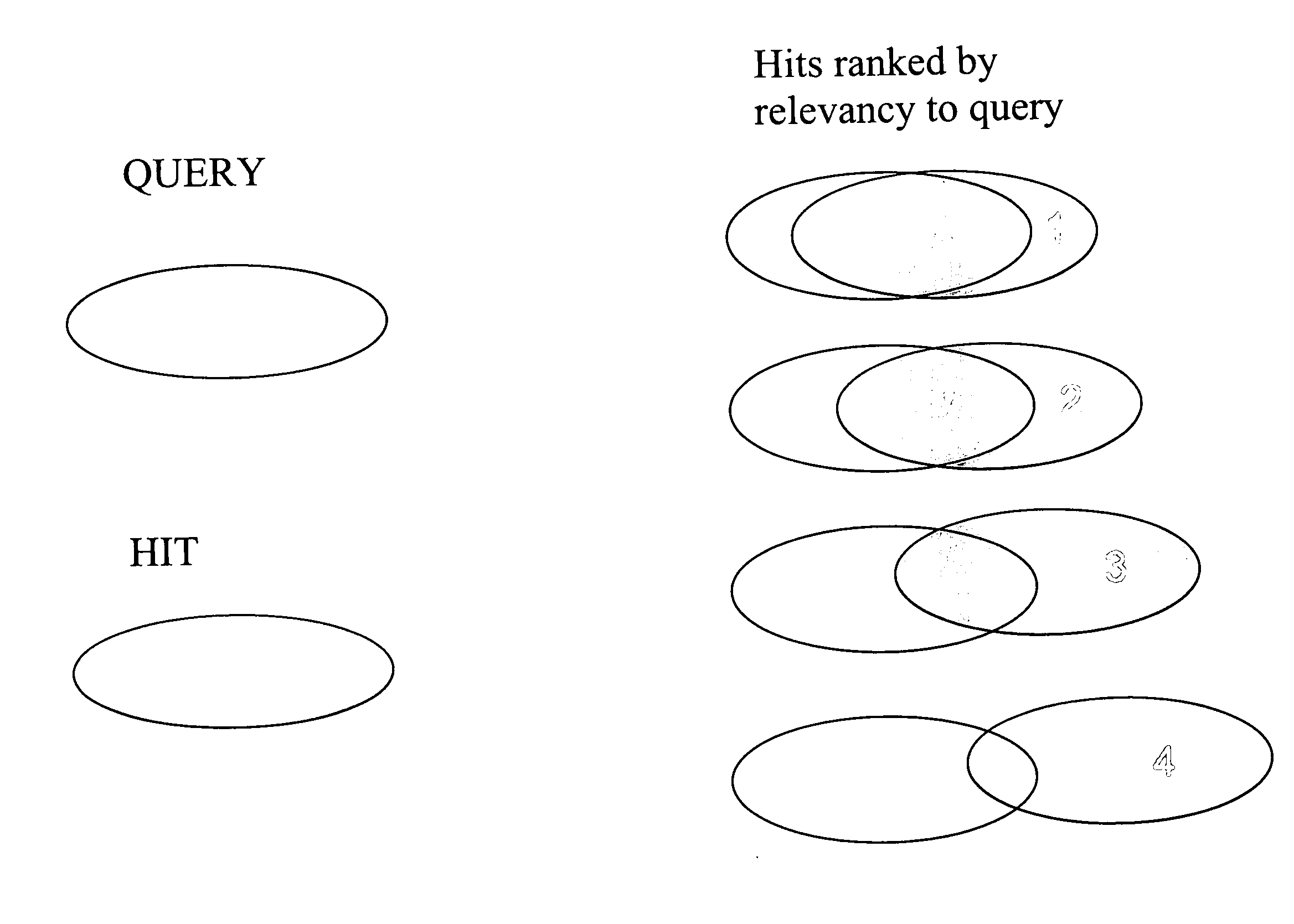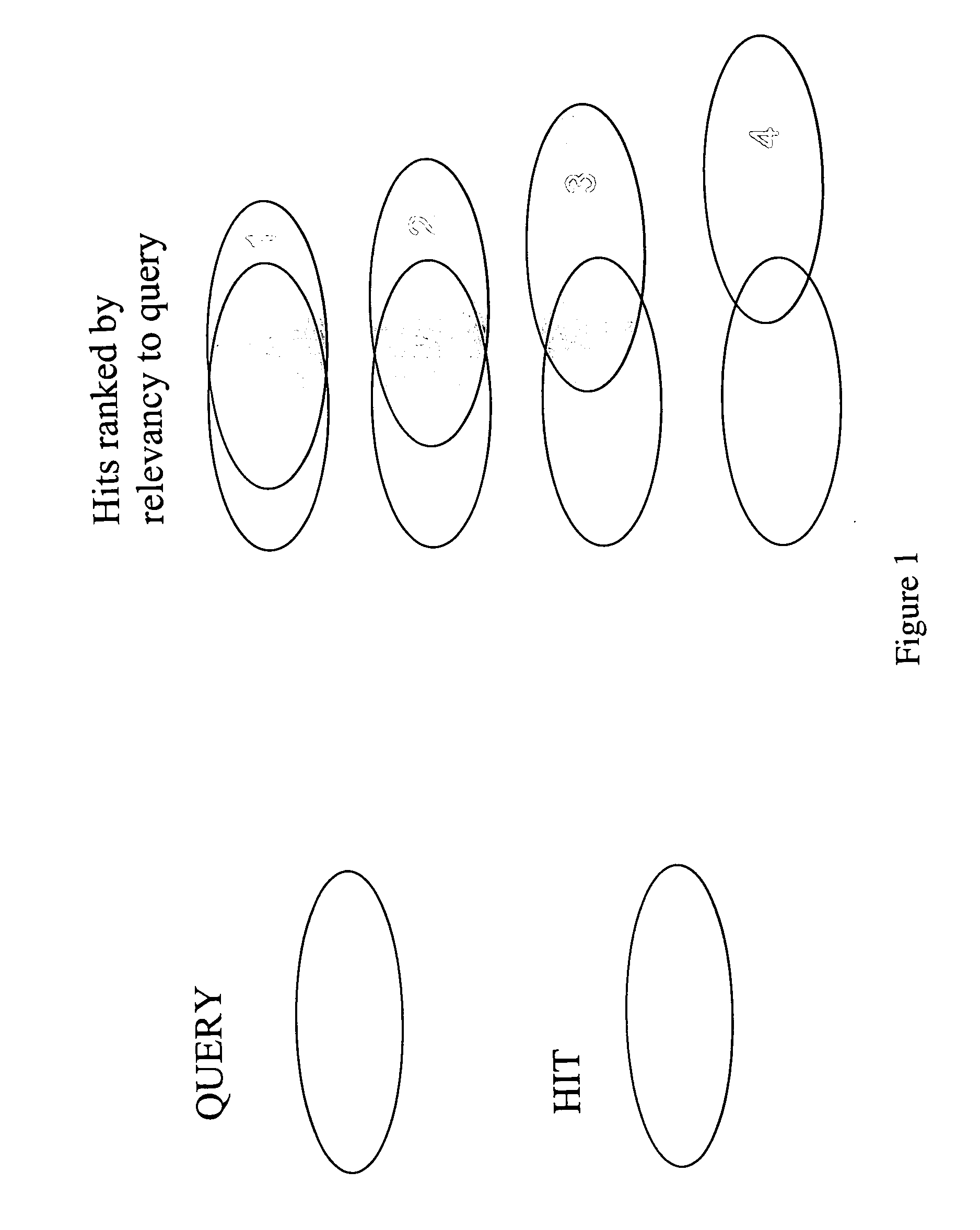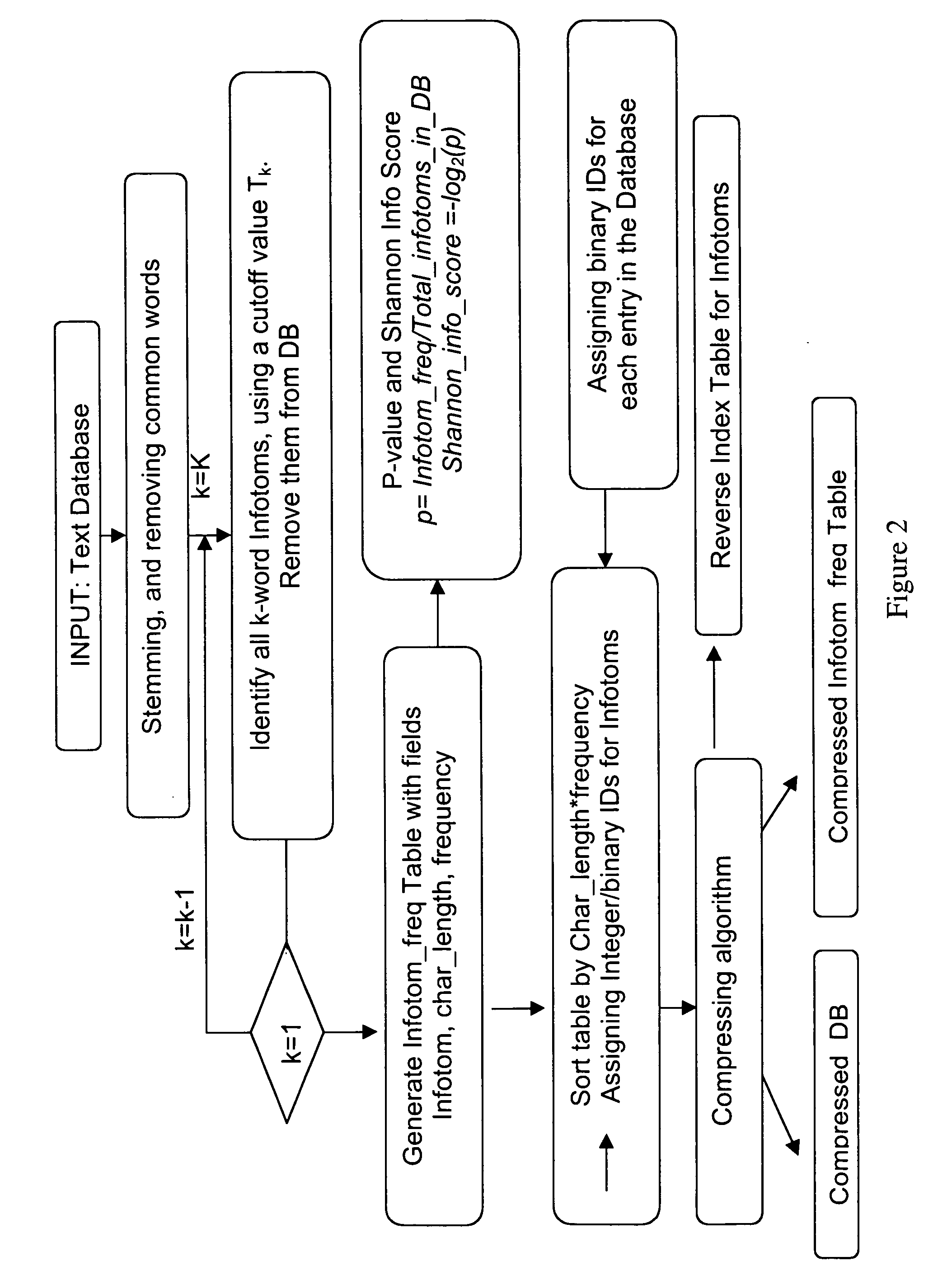Full text query and search systems and methods of use
a search system and full text technology, applied in the field of information technology and software, can solve the problems of limiting the database content and size, troublesome, and large number of hits
- Summary
- Abstract
- Description
- Claims
- Application Information
AI Technical Summary
Benefits of technology
Problems solved by technology
Method used
Image
Examples
example i
Implementation of the Theoretical Model
[0108] In this section details of an exemplary implementation of the search engine of the invention are disclosed.
1. Introduction to FlatDB Programs
[0109] FlatDB is a group of C programs that handles flat-file databases. Namely, they are tools that can handle flat text files with large data contents. The file format can be many different kinds, for example, table format, XML format, FASTA format, and any format so long that there is a unique primary key. The typical applications include large sequence databases (genpept, dbEST), the assembled human genome or other genomic database, PubMed, Medline, etc.
[0110] Within the tool set, there is an indexing program, a retrieving program, an insertion program, an updating program, and a deletion program. In addition, for very large entries, there is a program to retrieve a specific segment of entries. Unlike SQL, FlatDB does not support relationship among different files. For example, if all the f...
example ii
A Database Example for MedLine
[0185] Here is a list of database files as they were processed:
[0186] 1) Medline.raw Raw database downloaded from NLM, in XML format.
[0187] 2) Medline.fasta Processed database
[0188] FASTA Format for the parsed entries follows the format
[0189] 5>primary_id authors. (year) title. Journal. volume:page-page word1(freq) word2(freq)
[0190] words are be sorted by character.
[0191] 3) Medline.pid2bid Mapping between primary_id (pid) and binary_id (pid).
[0192] Medline.bid2pid Mapping between binary_id and primary_id
[0193] Primary_id is defined in the FASTA file. It is the unique identifier used by Medline. Binary_id is an assigned id used for our own purpose to save space.
[0194] Medline.pid2bid is a table format file. Format: primary_id binary_id (sorted by primary_id). Medline.bid2pid is a table format file. Format: binary_id primary_id (sorted by binary_id)
[0195] 4) Medline.freq Word frequency file for all the word in Medline.fasta, and their frequenc...
example iii
Method for Generating a Dictionary of Phrases
1. Theoretical Aspects of Phrase Searches
[0216] Phrase searching is when a search is performed using a string of words (instead of a single word). For example: one might be looking for information on teenage abortions. Each one of these words has a different meaning when standing alone and will retrieve many irrelevant documents, but when you one them together the meaning changes to the very precise concept of “teenage abortions”. From this perspective, phrases contain more information than the single words combined.
[0217] In order to perform phrase searches, we need first to generate phrase dictionary, and a distribution function for any given database, just like we have them for single words. Here a programmatic way of generating a phrase distribution for any given text database is disclosed. From purely a theoretical point of view, for any 2-words, 3-words, . . . , K-words, by going through the complete database the occurring frequ...
PUM
 Login to View More
Login to View More Abstract
Description
Claims
Application Information
 Login to View More
Login to View More - R&D
- Intellectual Property
- Life Sciences
- Materials
- Tech Scout
- Unparalleled Data Quality
- Higher Quality Content
- 60% Fewer Hallucinations
Browse by: Latest US Patents, China's latest patents, Technical Efficacy Thesaurus, Application Domain, Technology Topic, Popular Technical Reports.
© 2025 PatSnap. All rights reserved.Legal|Privacy policy|Modern Slavery Act Transparency Statement|Sitemap|About US| Contact US: help@patsnap.com



